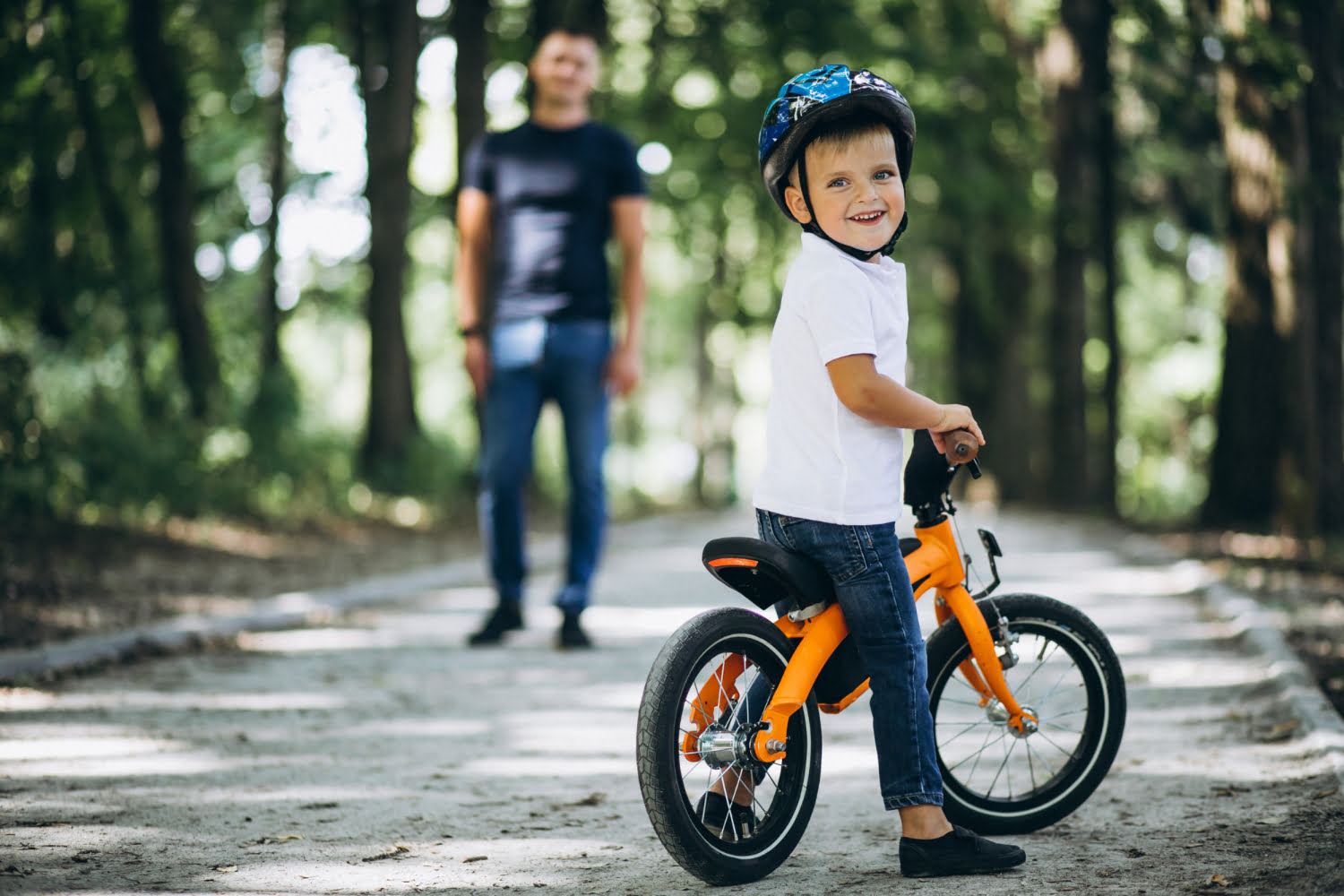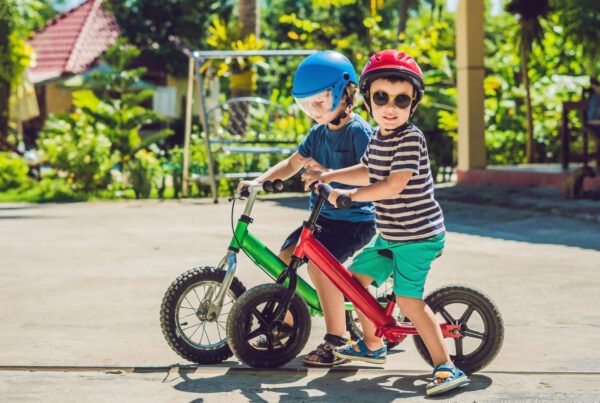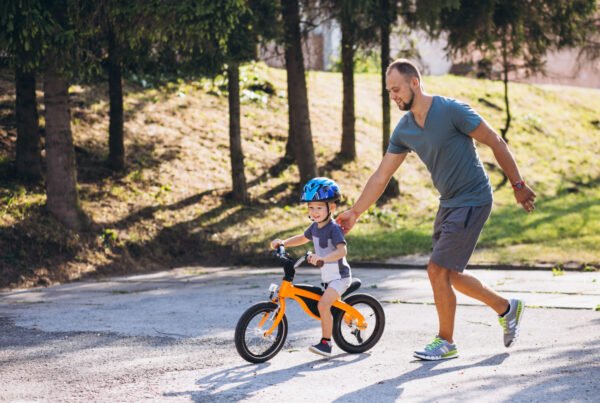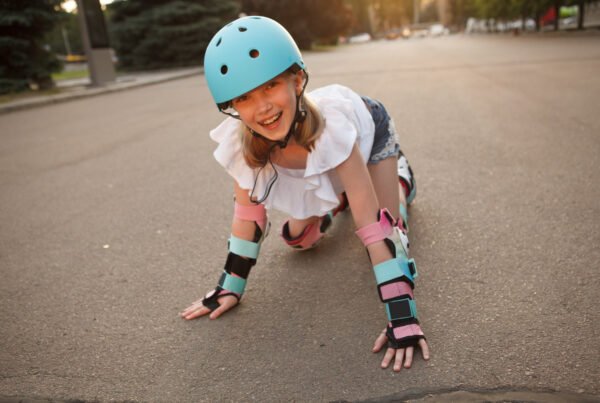Table of Contents:
An electric balance bike is an innovative way to introduce children to the world of cycling adventure. It combines the advantages of a traditional balance bike, which helps children learn to maintain balance, with modern electric assistance, making it easier to cover longer distances and tackle more challenging routes. However, to fully utilize the potential of this device and ensure maximum comfort and safety for your child, it is crucial to properly adjust the bike to their age and height. In this article, we will explain what an electric balance bike is, how it works, and why it is worth choosing. Then, we will discuss how to properly fit this equipment to your child’s needs so that their first cycling experiences are not only safe but also full of joy.
What is an electric balance bike and how does it work?
An electric balance bike is an innovative solution that combines the features of a traditional balance bike with modern technology. It is a type of bike that does not have pedals, and its main purpose is to teach children to maintain balance. The electric version of such a bike is additionally equipped with a small electric motor that can assist the child’s ride, making it easier for them to move around. This unique device works by assisting the child’s movement. The child propels the bike by pushing their feet against the ground, and the built-in electric motor can help tackle more difficult sections of the route, such as inclines. These bikes usually have power adjustment for the motor, allowing the intensity of assistance to be tailored to the child’s skills and needs.What parts make up an electric balance bike for children?
An electric balance bike consists of several key components:- Frame: The basic structure of the bike, usually made of lightweight and durable materials such as aluminum or carbon fiber.
- Handlebars: Enable the child to steer the bike, often equipped with ergonomic grips for added comfort.
- Wheels: Can be made of various materials, such as rubber or foam, affecting the comfort and grip of the ride.
- Electric motor: A small, lightweight motor typically mounted in the rear hub, designed to assist the child’s ride.
- Battery: Powers the motor, usually lithium-ion, providing long working hours and quick charging.
- Seat: Important to have adjustable height to fit the child’s growth.
Why is it important to properly fit the bike to the child’s age and height?
Properly fitting the bike to the child’s age and height is crucial for many reasons that directly impact the comfort, safety, and physical and emotional development of the young rider. Firstly, a well-fitted bike ensures optimal riding comfort. Children, especially the youngest ones, need equipment that will not cause difficulties in use. A bike that is too large can be cumbersome for the child, making the ride tiring and discouraging. Conversely, a bike that is too small can restrict the child’s movements and make them ride in an unnatural, uncomfortable position, leading to muscle and joint pain. Safety is another key aspect directly related to properly fitting the bike to the child’s height and age. A poorly fitted bike can cause many dangerous situations. The child should be able to touch the ground with their feet easily, which is crucial for stopping and starting. In the case of balance bikes, where the child propels themselves by pushing off the ground, the ability to place their feet firmly on the ground is absolutely essential. A poorly fitted bike increases the risk of falls, which can lead to serious injuries. Learning efficiency is another important aspect. A child learning on a properly fitted bike will quickly acquire skills such as balance, steering, and speed control. Balance bikes are designed to teach children the basics of cycling skills before they transition to riding a traditional pedal bike. If the bike is well-fitted, this process runs smoothly and effortlessly. The child feels more confident, leading to faster progress in learning. Properly fitting the bike also impacts the child’s physical development. Even at the basic level, cycling engages many muscle groups and supports gross motor skill development. To fully benefit from these advantages, the child needs equipment that allows them to perform movements correctly. A bike that is too large may force unnatural positions, leading to strain and injuries. Conversely, a bike that is too small may limit muscle development and make the ride less effective. Besides physical aspects, properly fitting the bike also affects the child’s emotional and psychological development. A child who feels confident on their bike is more likely to take on new challenges and explore their surroundings. This fosters independence and self-confidence. Riding a poorly fitted bike can be frustrating and demotivating, leading to avoidance of physical activity and a negative attitude towards sports.How to properly adjust an electric balance bike for your child?
To properly adjust the bike for your child, follow these tips: Child’s height- The most important criterion is the child’s height. The seat height should be set so that the child can easily place both feet on the ground with slightly bent knees.
- Age is also an important factor because bikes are designed with different age groups in mind. Manufacturers usually provide age recommendations for their specific models.
- Ensure the electric balance bike can support the child’s weight. Each model has a specified maximum load capacity.
- Check if the bike has adjustable seat and handlebar heights. This allows the bike to “grow” with the child.
- Before purchasing, try out several models to find the one that best suits the child in terms of comfort and ease of use.

I am passionate about both traditional and electric bicycles. I specialize in advising, testing, and reviewing the latest models to help you make the best choice. My goal is to promote an active and safe lifestyle for both children and adults. I invite you to read my articles and explore the world of bicycles with me!





